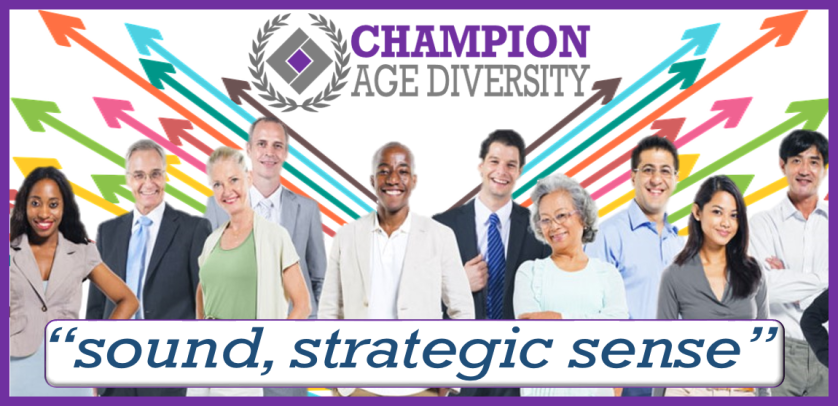Talkin' Bout My Generation!
What is Age Diversity?

Age Diversity is defined as the ability of an organization to accept people of various age categories within the organizations' business environment. The ability to manage both the group of people and merge them in a single working environment. Age Diversity is a hot topic in today's business environment as we currently have more generations in the workplace than ever before. However, age diversity tends to be less focused on than gender and race diversity. While age and gender diversity are important, age diversity is another equally important piece of the puzzle.
As many as 5 generations represent today's workforce.
Silent/Greatest Generation: Born between 1925 to 1945
Baby Boomers: Born between 1946 to 1964
Generation X: Born between 1965 to 1980
Generation Y (Millennials): 1981 to 1995
Generation Z (IGen): 1996 and later
Various trends lead to why today's workforce is represented by so many generations. 1.) People are working longer since they are healthier and living longer. 2.) Many Silent Generation or Baby Boomers are choosing to work because they want to or are not financially in a position to retire. 3.) Some Baby Boomers are supporting Millennial children still living at home in their 20's and 30's.
What are Advantages of Age Diversity?
Age diversity improves performance and production. Productivity in both older and younger workers is higher in companies with mixed-age work teams. Age diversity within work teams is positively related to performance when groups are involved in complex decision-making tasks.
Age diversity can help prevent employee turnover. Workers who are 55 and over contribute to lower turnover, as they are loyal workers who typically stay in their jobs longer than younger employees. Employers gain lower turnover costs and more skilled, experienced employees.
Age diversity drives innovation. Workers bring different experiences, styles, expectations, and perspectives. These differences become a source of strength and innovation when addressed and managed the right way. The bottom line is that the most diverse organizations are usually the most innovative.
What are Disadvantages or Challenges of Age Diversity?
Lack of mutual interests, lack of communication, and egoistic approach because of the age difference. For example, a single issue may have different ways of approaching a solution. The problem rises when people stick to their decision and are not willing to communicate and work together to compromise their ideas for a solution. In many cases these problems arise due to ego and less teamwork. People of different age groups have a mindset of why they have to bend for people who are of not up to their standards. When a manager is younger in age due to his education, senior employees might react due to level of experience. Another miscommunication is language and slang. Whereas one generation may understand a certain slang, another generation may not.
Resistance of adopting a new culture. There are employees who do not want to change their working style even in a new environment. Some refuse to accept that technology is taking over, especially when a new system is taught by a younger generation.
Forming groups within teams. Employees of the same team may be more comfortable with people of the same age due to language, religion, or social status.
Not very comfortable with each others attitudes or behavior. It is common human nature that people will go along with people of their beliefs, opinions or nature. We also see this with same gender.
Employees attach themselves to a particular style and there is no social mingling. We tend to see this with employees of different departments. Due to this employees might miss out on educational experiences with exposure to different parts of the business.
Conclusion
A diverse workforce is a reflection of a changing world and marketplace. Diverse work teams bring high value to organizations. Respecting individual differences will benefit the workplace by creating a competitive edge and increasing work productivity. Diversity management benefits associates by creating a fair and safe environment where everyone has access to opportunities and challenges. Management tools in a diverse workforce should be used to educate everyone about diversity and its issues, including laws and regulations. Most workplaces are made up of diverse cultures, so organizations need to learn how to adapt to be successful. But not all companies focus on inclusion as well as diversity. Inclusion goes beyond the identification of differences by encouraging a work environment that allows people to be who they are and to feel safe and respected. Employees will thrive only if they feel truly valued and included in the long-term strategy and day-to-day operations of their organization. Diversity and inclusion are essential to the health of any enterprise because they lead to greater engagement, teamwork, performance and innovation by workers.

